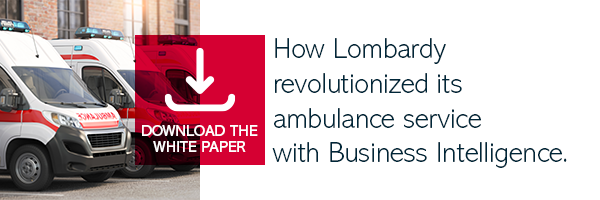Artificial Intelligence (AI) is rapidly gaining ground as a transformative technology in the healthcare sector, offering a wide range of applications that promise to improve the prevention, diagnosis and treatment of numerous diseases, as well as increase people's well-being and quality of life. However, although this marriage of AI and health has considerable potential, it has been met with resistance and mistrust by medical and other professionals in the field.
The benefits that AI can offer the healthcare sector are, however, undeniable. A joint report by EIT Health and McKinsey & Company explored how AI can support improved care outcomes, patient experience and access to services.
But is the healthcare system ready to change?
Healthcare system challenges by 2050
Healthcare is one of the great success stories of our time, but with an ageing population, changing patient expectations and rising costs of healthcare services, doctors are faced with increasingly complex challenges. By 2050, it is predicted that one in four people in Europe and North America will be over 65 years of age, and this will fuel a growing demand for care for patients with complex needs. This scenario calls for a transformation of healthcare systems: from an episodic care approach to a proactive one, based on long-term care management.
Also complicating the situation is the shortage of health personnel. According to the World Health Organisation, there is a global shortage of more than 9.9 million doctors, nurses and midwives. In this context, we need not only to attract and train more health workers, but also to ensure that their time is used optimally to provide valuable care to patients.

All these challenges can be addressed with the support of Artificial Intelligence to:
-
improve access to healthcare services
-
provide a better employee experience for operators
-
automate repetitive tasks
-
free staff from low-value activities and focus them on direct patient care.
Consequently, the use of smart technologies could significantly reduce the risk of burnout.
But, in concrete terms, how does AI apply to the medical field?
Artificial Intelligence for medicine: how to apply it
Artificial Intelligence applications in the medical field can be grouped into 3 key areas:

1. Care Delivery. The integration of Artificial Intelligence in the care delivery process is revolutionising the healthcare sector, enabling better patient care and resource optimisation. AI can be used to create personalised care plans and therapies, support healthcare professionals in the remote monitoring of chronic patients, simplify the transition from hospital to home care, and improve collaboration between doctor and patient along the diagnosis, treatment and care pathway. A particular example can be observed in the field of blood donation. In this case, AI can help doctors and healthcare professionals predict the demand for blood, assess the suitability of donors (based on the health data provided by the patient and his or her medical history) or even coordinate logistics: from donor selection to transport and storage of the collected blood.
2. Clinical Decision Support. AI-based decision support systems are designed to help physicians make clinical decisions by providing them with relevant, evidence-based information. These systems use complex algorithms to analyse patient clinical data, medical guidelines and scientific literature to suggest appropriate treatment options or drug dosages.

3. Diagnostics. Thanks to recent advances in AI technology, several applications have been developed to help doctors formulate their diagnoses. AI systems can analyse a patient's symptoms, compare them with databases of similar cases and provide possible differential diagnoses. Furthermore, one of the advantages of AI is its ability to analyse large amounts of data from various sources, such as images, laboratory data, patient records and clinical studies. Machine learning algorithms can identify hidden patterns and signals in the data, which might not be obvious to the human eye, and pick up valuable clues for diagnosis. AI has also shown great potential in the interpretation of diagnostic images, such as X-rays or MRIs. In this case, AI can detect anomalies, lesions or characteristic patterns in the images, helping doctors to detect early signs of disease or identify suspicious areas for further investigation.
How to encourage the introduction of Artificial Intelligence in the healthcare sector
Advances in the application of artificial intelligence in healthcare have been revolutionary. However, the transition to a world where AI can bring significant, consistent, and comprehensive improvements to healthcare is a major challenge.
There are 2 issues that players in the healthcare ecosystem will be called upon to work on in the coming years:
-
Improve data quality, security and interoperability of systems. Before embarking on AI implementations in healthcare, it is important to address barriers related to data access, quality and availability, as well as to have robust data sharing policies that comply with relevant European regulations. Finally, another challenge is to create an interconnected data infrastructure so that AI algorithms can exploit a rich database to generate analyses and suggest actions.
-
Think of AI as an opportunity. In the context of healthcare, the introduction of AI requires strong clinical leadership and the ability to identify the right use cases in order to support professionals rather than replace them. And priority should be given to solutions that reduce the time spent on administrative tasks rather than virtual assistants for patients. Although this process takes time, it is an important step in the successful adoption of this new technology.

The main challenge for Artificial Intelligence in the medical field therefore concerns the enormous amount of data generated by humans and the possibility of using this information not only for epidemiological predictions, but also to support the diagnosis and treatment of each individual patient. This innovation is very close to reality and the scientific community, together with the software industry, is working hard to realise it. The future is not as far away as one might think.


